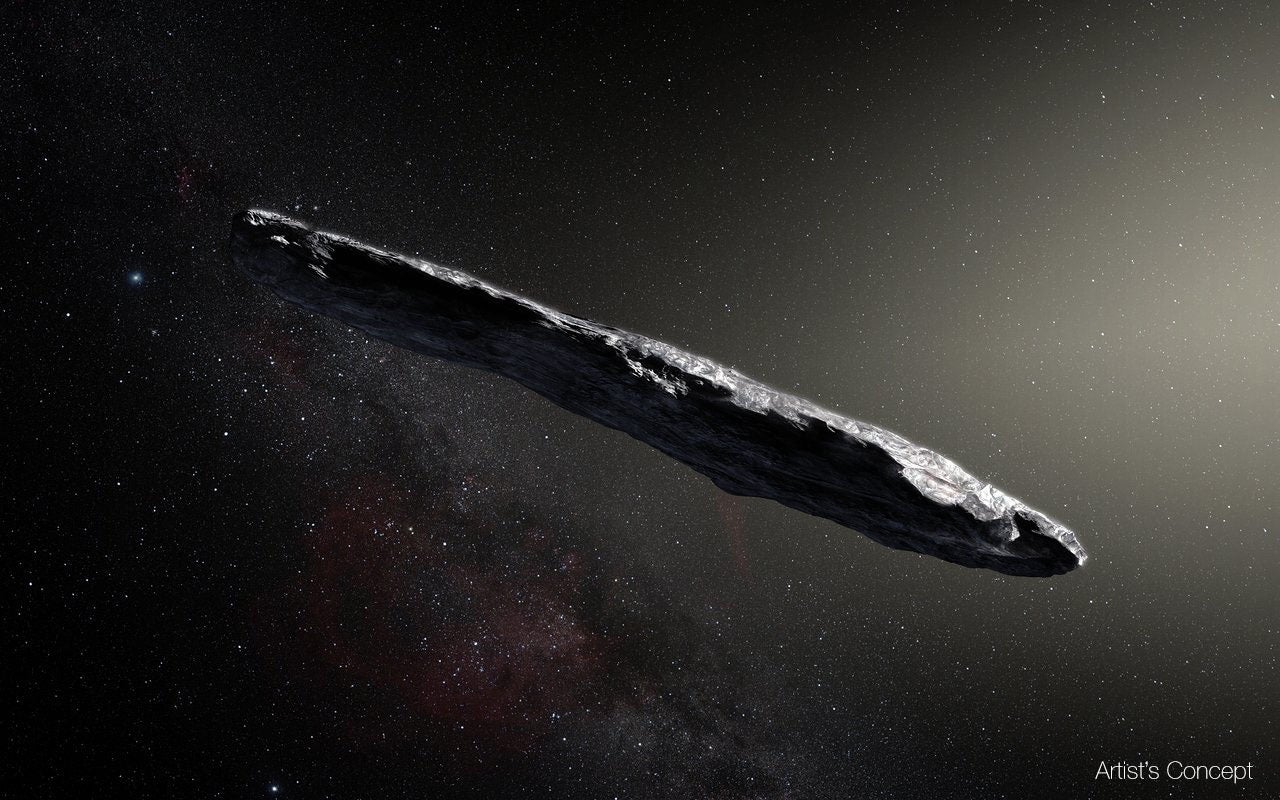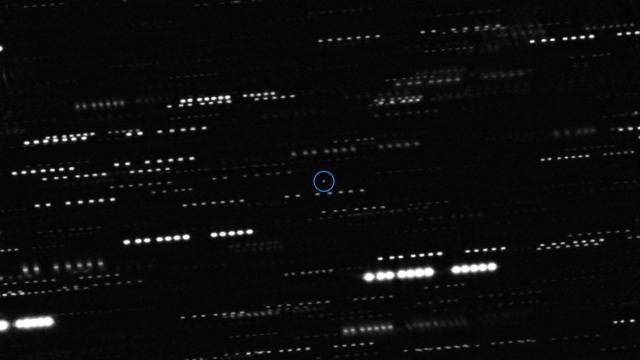A new U.S. Space Command memo says that a meteor that fell to Earth in 2014 came from interstellar space. That would make it the first known interstellar object in our solar system, preceding ‘Oumuamua, a cigar-shaped object that first appeared in 2017 and seemed to come from another star system. But some scientists aren’t satisfied with this bold proclamation.
The memo, dated March 1, describes a 2019 paper on the meteor and the subsequent analysis of the information by Joel Mozer, the director of science, technology, and research for the U.S. Space Force. The paper, written by astrophysicists Avi Loeb and Amir Siraj of Harvard University and hosted on the pre-print server aRxiv, details a foot-and-a-half-wide, half-ton meteor that was detected shortly after 1 p.m. ET on January 8, 2014. The object’s high speed “implies a possible origin from the deep interior of a planetary system or a star in the thick disk of the Milky Way galaxy,” Siraj and Loeb wrote.
6/ “I had the pleasure of signing a memo with @ussfspoc’s Chief Scientist, Dr. Mozer, to confirm that a previously-detected interstellar object was indeed an interstellar object, a confirmation that assisted the broader astronomical community.” pic.twitter.com/PGlIOnCSrW
— U.S. Space Command (@US_SpaceCom) April 7, 2022
The 2014 meteor is one of many bolides (very bright meteors) that recently became part of the public record. Plenty of fireball data is collected by U.S. government sensors that are meant to spot projectiles like missiles. An agreement between NASA and the U.S. Space Force authorised decades of fireball event records to be released and hosted by NASA’s Centre for Near Earth Object Studies.
But some astrophysicists have issues with the new claims. “This letter isn’t science, and I put no weight on it,” Jonathan McDowell, an astrophysicist at the Harvard-Smithsonian Centre for Astrophysics, told Gizmodo in an email. “‘Reviewed the data’ isn’t showing your work.”
“The detailed calibration and accuracy information for the infrared missile warning satellites are not available (for good reasons), and without that, there will always be a question mark on this analysis,” McDowell added.
Though the interstellar meteor reached Earth in 2014, attention was only drawn to it on the heels of the discovery of ‘Oumuamua, which zoomed through our cosmic neighbourhood at 137,921 km per hour. (When the object bent around our Sun, it was travelling at nearly 321,869 km per hour!) Loeb, author of the paper on the 2014 meteor, has widely promoted the theory that ‘Oumuamua was an alien spacecraft.
But there is another reason some scientists didn’t investigate the event, included in an online fireball database. An earlier team scrutinizing the government’s fireball data found that it “is very prone to errors, especially for the speed and direction information that is essential to making a claim that a meteor is interstellar in origin,” said Alan Jackson, an astrophysicist at Arizona State University, in an email. Jackson said the data only matched another dataset — the Desert Fireball Network — “about one third of the time” and sometimes was “dramatically wrong.”

“No one really doubts the possibility” that an interstellar bolide could hit Earth, Steven Desch, also an astrophysicist at the University of Arizona, wrote in an email. But, he noted, “a simple ‘trust us’ doesn’t substitute for open science. It doesn’t enable the cornerstone of the scientific method — reproducibility.”
The Space Command’s affirmation of Siraj and Loeb’s conclusions is corroborating, but does not settle anything. “It is not possible for other scientists to independently examine the raw data and confirm interstellar origin of this meteor,” Jackson said.
“If the speed and direction of the meteor are correct, then it was interstellar in origin,” Jackson added. “However, we still don’t really know how accurate the speed and direction are, so the claim that the probability of it being interstellar is ‘99.999%’ (as stated in the Siraj & Loeb paper) is basically just numbers plucked out of the air.”
While we’re currently dealing with insufficient data (‘Oumuamua sped past us so quickly that observation opportunities were limited), new technology like the Webb Space Telescope and the Vera Rubin Observatory should help us get a better look at any future interstellar visitors.
